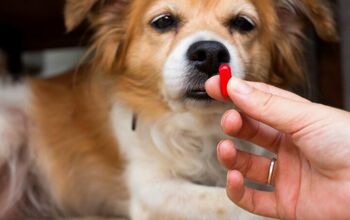Staffordshire Bull Terrier


About Staffordshire Bull Terrier
Some dogs have been around and beloved for so long that they have developed a classic status. The Staffordshire Bull Terrier is one of these dogs. Considered an “old-time” breed of dog with a rich history across both American and British lineage, the Staffordshire Bull Terrier is a tenacious and lovable dog with heaps of courage in just about everything it does. If you’re looking for an assertive dog that will make its presence known to strangers, this is the exact breed that you’ve been looking for. Generally friendly to strangers and very eager and energetic, this dog can become an instant hit and become known as “characters” among your family and friends.
Sadly, not every element of this dog breed is so bright and sunny. The Staffordshire Bull Terrier tragically gets this temperament from a rich and sometimes ugly history that included dog fighting. Although this checkered past might be a turn-off for some people while researching dog breeds, actually meeting a Staffordshire Bull Terrier will yield an unexpected friendly experience that can actually be quite endearing. If you’re looking for a city dog that is content to live in your apartment and sit alone for hours at a time, you should probably move on. For a variety of other tastes, however, the Staffordshire Bull Terrier is a perfect companion.
So, is The Staffordshire Bull Terrier the right dog to bring home to your family? You’ve come to the right place to find out. Keep your eyes glued to this page and scroll away. Everything that you could possibly want to know about this remarkable animal is about to be revealed.
The Staffordshire Bull Terrier is a tenacious, lovable dog with heaps of courage in just about everything it does.
Originating in Staffordshire, England over a hundred years ago, the dog was originally bred out of Bulldogs and smaller terriers like the Manchester Terrier – thus giving the dog its entirely appropriate name of “Staffordshire Bull Terrier.” As Bulldogs could not be used for dog fighting in those days, a new breed with similar tenacity was required, but after dog fighting was finally made outright illegal, the Staffordshire Bull Terrier lived on as an excellent worker and companion dog.
Eventually, the breed gained recognition by the British Kennel Club in 1935, and it wasn’t long before the Staffordshire Bull Terrier became a favorite at the shows, winning championships early on in its recognized history. Today it is considered a perfectly solid candidate at dog shows and can definitely win big points with an assertive personality. A well deserved happy ending for a pooch that didn’t have the happiest origin story.
Pedigree
Having been bred from terriers similar to the Manchester as well as Bulldogs, it’s not hard to see where the Staffordshire Bull Terrier gets its pedigree from. A simple look at the Staffordshire Bull Terrier will yield you perfectly reasonable estimations as to its immediate ancestry. Because the pedigree is so easy to discern, the Staffordshire Bull Terrier can be considered a strong breed in and of itself, even though it plays a bit of a “hybrid” role. The pedigree of hailing from working-class and fighting dogs has not especially made the Staffordshire Bull Terrier a violent dog. It has been many generations since those unfortunate origins and these dogs tend to be quite docile and friendly now.
With a voracious thirst for exercise and activity comes an equally voracious appetite, but as always it’s important to remember the size of the Staffordshire Bull Terrier and feed it accordingly. It’s easy for a 150-pound human to overestimate just how much food a dog needs, even if many dogs intimate that they can eat whatever you throw at them.
If you are ever concerned about either establishing or altering your dog’s diet, then it is always wise to consult with a veterinarian first. While pet blogs and dog food manufacturers provide useful feeding guidelines, they are still guidelines and should not be treated as gospel. All dogs are different after all, each with their own needs. Only your vet is qualified to determine the specific dietary needs of your personal pooch. So always rely on them for advice on what to put in your pup’s bowl.
Generally friendly to strangers and very eager and energetic, this dog can become an instant hit and become known as “characters” amongst your family and friends.
Strong training from an early age is important with the Staffordshire Bull Terrier. It should be properly socialized to other dogs and to people, and it should certainly learn the boundaries of acceptable behavior in a home setting. For example, too much growling, showing of teeth, and even playful biting should not be considered acceptable despite how often it seems your Staffordshire Bull Terrier is acting on instinct. The Staffordshire Bull Terrier is a dog that will get a lot of use out of chew toys, so be sure to find a few that it likes.
As always, it’s important to rely on positive reinforcement and reward-based training when raising your Staffordshire Bull Terrier. These aren’t just the most successful training techniques, they are the only acceptable ones. Negative and punishment-based training is closer to abuse and should be avoided. Not only is it a horrible way to treat your dog, but it will never deliver the results that you seek.
Although strong and confident, the dog is only medium-sized and will weigh up to about 40 pounds in males and up to around 35 in females. Going any higher than these maximum weights should be considered overweight.
Temperament / Behavior
As noted, the temperament of the Staffordshire Bull Terrier is a main attraction if you like a dog that is assertive, friendly, and confident. Many people can be afraid of confident dogs, but the Staffordshire Bull Terrier isn’t a terribly aggressive dog unless raised improperly or not giving proper training from its time as a puppy. If you are the type of owner who likes to view a dog as an equal, you will probably not have an entirely successful relationship with your Staffordshire Bull Terrier. Early training and socialization are of course vital to ensuring that your Staffordshire Bull Terrier develops the friendliest possible disposition, but that independent streak will always remain. It’s huge part of this particular breed’s charm.
The Staffordshire Bull Terrier is prone to cataracts (which is not unusual in terriers), as well as hip dysplasia. Also, watch out for gas in this dog – it sounds like a joke, but it won’t be a joke once you experience it! It’s important to maintain regularly scheduled checkups with a vet to ensure that any potential health issues are identified and treated as early as possible.
A solid life expectancy of 10-16 years, barring health problems, should be expected in most dogs of this breed.
Like any other dog, regular exercise is key here. But given the breed we’re talking about, you’ll want to make sure the Staffordshire Bull Terrier gets enough exercise that it can actually be tired out. It will make a much better companion indoors if it doesn’t get antsy and instead gets its fill of mouth-related activities (think Frisbees and chew toys) as well as running around and generally being a dog. These pups have a great deal of energy, so if you don’t help them burn off that energy, they will burn through that energy in more mischievous ways that you won’t appreciate.
The temperament of the Staffordshire Bull Terrier is a main attraction if you like a dog that is assertive, friendly, and confident.
The American Kennel Club calls this breed “a smooth-coated dog with great strength for his size. He is active and agile and comes in six color varieties: solid red, fawn, white, black, blue, or brindle. Today, he serves primarily as a family companion and is seen in the show, obedience and agility rings.”
With short coat that comes in a variety of colors, it might be hard to distinguish exactly what a Staffordshire Bull Terrier is. The coat is very easy to manage, and in fact you should avoid the temptation to manage it, as it is naturally short and the whiskers should remain as they “come with” the dog.
It is important to properly train a Staffordshire Bull Terrier from a young age, ensuring that it gets strict rules and boundaries placed on it while still giving it an opportunity to socialize and grow naturally. You must establish yourself as the pack leader and set boundaries as early as possible to ensure that your pup grows into the best and friendliest dog possible.

Amy Tokic, Editor of PetGuide.com, is a passionate animal lover and proud pet parent of Oscar, a Shih Tzu/Chihuahua cross, and Zed, a Japanese Chin. Her love of animals began in kindergarten, when she brought her stuffed dog Snoopy into class with her every day. Now, she writes about her adventures in pet ownership and tirelessly researches products, news and health related issues she can share with other animal enthusiasts. In her free time, Amy loves perusing used book and record stores, obsessing over the latest pet products available and chasing squirrels with wild abandon (a habit attributed to spending too much time with her pooches).
More by Amy Tokic

























